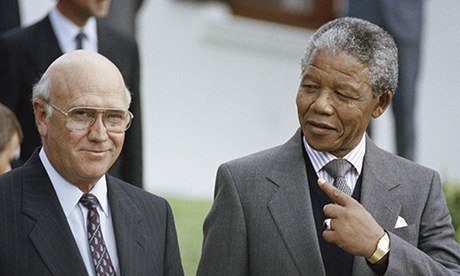Tuesday, December 17, 2013
in math and science, the best fend for themselves...,
By
CNu
at
December 17, 2013
0
comments
![]()
Labels: edumackation , play-at-your-level
no math gene
By
CNu
at
December 17, 2013
0
comments
![]()
Labels: edumackation , play-at-your-level
Monday, December 16, 2013
one of WW-II's darkest secrets...,
"Our unit did things no human being should ever do," confesses Unit 731 member Yoshio Shinozuka. His unit developed the deadly pathogens which were used to infect 250,000 Chinese. Japan's refusal to apologise for its actions, or to acknowledge Unit 731's existence, has further upset its victims.
A film by ABC Australia - Ref. 1654
By
CNu
at
December 16, 2013
17
comments
![]()
Labels: cull-tech , eugenics , History's Mysteries , Living Memory , WW-III
"scientific" racism on the ropes among educated highschoolers...,
By
CNu
at
December 16, 2013
0
comments
![]()
Labels: cultural darwinism , edumackation , paradigm
why are bacteria different from eukaryotes?
By
CNu
at
December 16, 2013
0
comments
![]()
Sunday, December 15, 2013
anyone misunderstanding the genesis of the Evengelii Gaudium simply hasn't been paying attention...,
By
CNu
at
December 15, 2013
17
comments
![]()
Labels: Collapse Casualties , Collapse Crime , Living Memory , Peak Capitalism , What Now?
FAR more impressed with Pope Francis than I am with myself....,
By
CNu
at
December 15, 2013
18
comments
![]()
Labels: History's Mysteries , People Centric Leadership , The Hardline
Saturday, December 14, 2013
Why A Middle-Aged White Man Allegedly Decided He Was Going To Bomb A Kansas Airport
By
CNu
at
December 14, 2013
0
comments
![]()
Labels: Livestock Management , status-seeking , the wattles
when knowledge, love, and work are stunted and frustrated....,
 |
Hermes Press Review of Listen Little Man |
By
CNu
at
December 14, 2013
0
comments
![]()
the modern default configuration when isht gets real....,
By
CNu
at
December 14, 2013
0
comments
![]()
Labels: egregores , killer-ape , neofeudalism
the longterm unemployed are doomed
By
CNu
at
December 14, 2013
0
comments
![]()
Labels: Collapse Casualties , What Now?
Friday, December 13, 2013
a hero to THEM = a villain to US
Once in power, Pilger explained, the ANC's official policy to end the impoverishment of most South Africans was abandoned, with one of his ministers boasting that the ANC's politics were Thatcherite:
By
CNu
at
December 13, 2013
4
comments
![]()
Labels: egregores , global system of 1% supremacy , you used to be the man
welcome to the memory hole...,
By
CNu
at
December 13, 2013
0
comments
![]()
Labels: agenda , count zero , elite , establishment , hegemony , information anarchy
Thursday, December 12, 2013
the banality of "goodness"
By
CNu
at
December 12, 2013
3
comments
![]()
Labels: Living Memory , presstitution , propaganda
yeah, um no..., ANC and nuclear weapons not a good look....,
By
CNu
at
December 12, 2013
0
comments
![]()
Labels: Living Memory , unspeakable
Wednesday, December 11, 2013
in other asia related news....,
By
CNu
at
December 11, 2013
3
comments
![]()
Labels: information anarchy , Obamamandian Imperative
and this would be a problem for us because.....?
By
CNu
at
December 11, 2013
0
comments
![]()
Labels: global system of 1% supremacy , Peak Capitalism , The Great Game
asia all about that hootin and thumpin life right now...,
By
CNu
at
December 11, 2013
0
comments
![]()
Labels: killer-ape , What IT DO Shawty... , WW-III
playing chicken in an increasingly hostile context..,
By
CNu
at
December 11, 2013
0
comments
![]()
Labels: weather report , WW-III
beggar thy neighbor is an invitation to war...,
By
CNu
at
December 11, 2013
0
comments
![]()
Labels: Peak Capitalism , What Now?
Tuesday, December 10, 2013
what those pilonidal teatards have spent 48 years fighting to subvert...,
By
CNu
at
December 10, 2013
3
comments
![]()
Labels: Living Memory , Race and Ethnicity
the teatards are working to consolidate control of school district revenue streams and enrich their cronies, period
By
CNu
at
December 10, 2013
0
comments
![]()
Labels: parasitic , partisan , propaganda
I Don't See Taking Sides In This Intra-tribal Skirmish....,
Jessica Seinfeld, wife of Jerry Seinfeld, just donated $5,000 (more than anyone else) to the GoFundMe of the pro-Israel UCLA rally. At this ...
-
theatlantic | The Ku Klux Klan, Ronald Reagan, and, for most of its history, the NRA all worked to control guns. The Founding Fathers...
-
Video - John Marco Allegro in an interview with Van Kooten & De Bie. TSMATC | Describing the growth of the mushroom ( boletos), P...
-
Farmer Scrub | We've just completed one full year of weighing and recording everything we harvest from the yard. I've uploaded a s...















